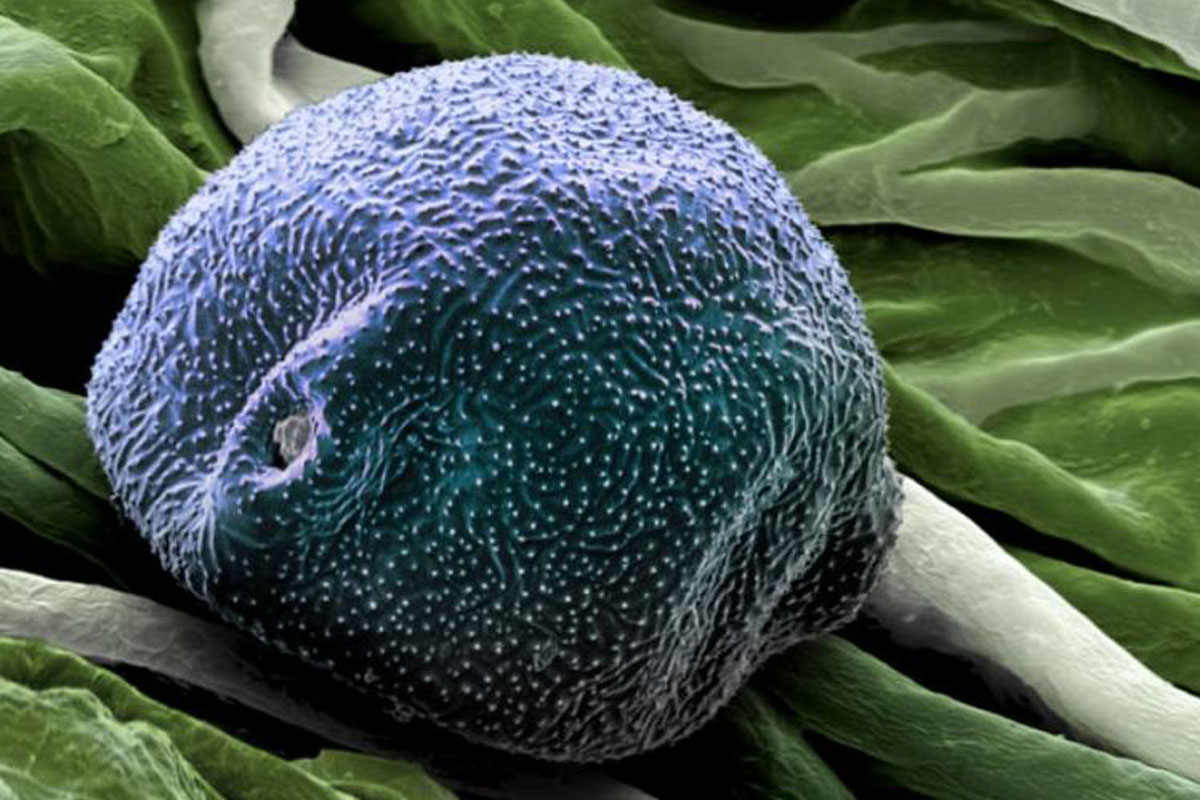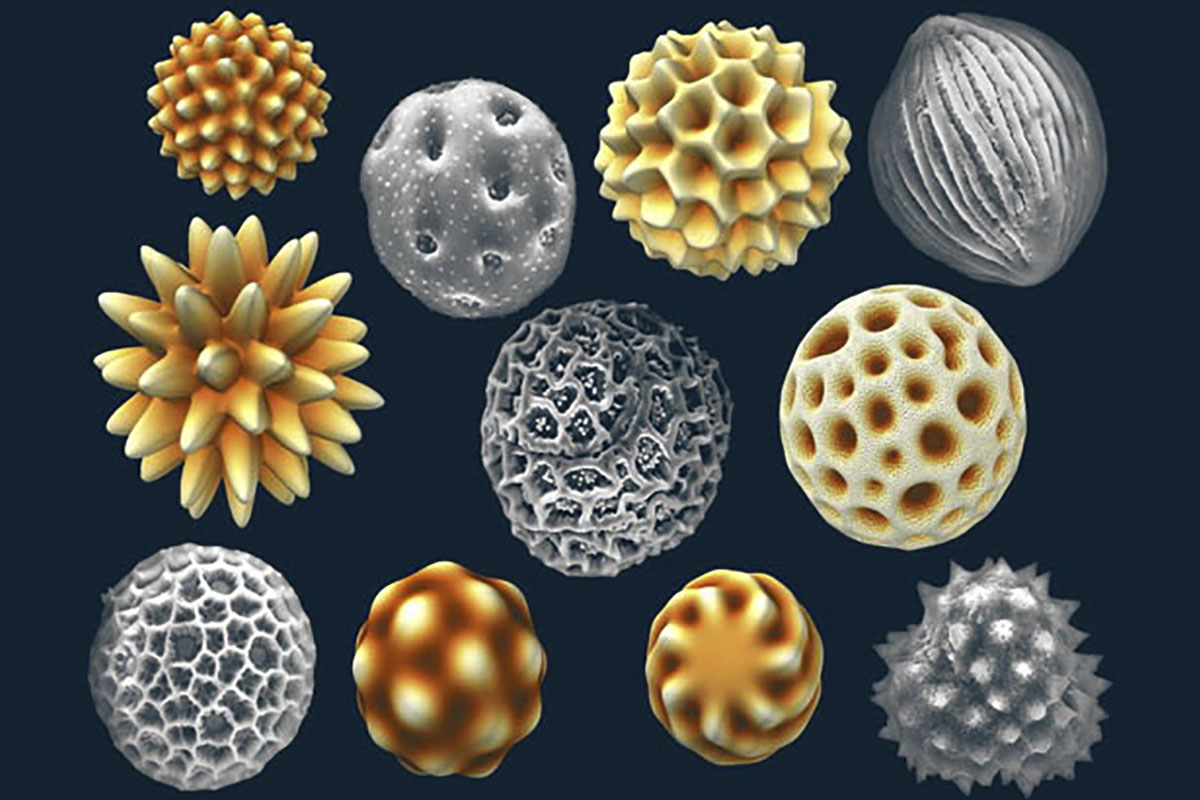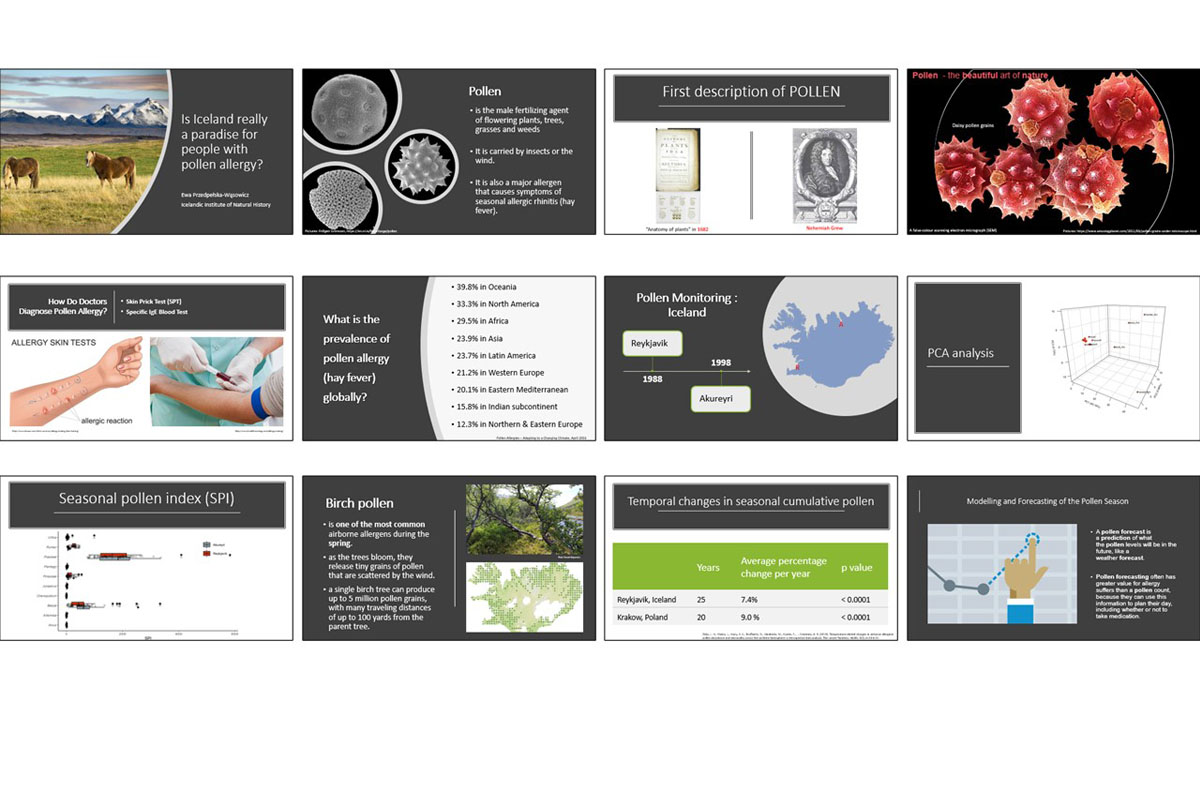16. desember 2020. Ewa Maria Przedpelska-Wasowicz: Is Iceland a paradise for people with pollen allergies?

Ewa Maria Przedpelska-Wasowicz plöntulífeðlisfræðingur hjá Náttúrufræðistofnun Íslands flytur erindi á Hrafnaþingi miðvikudaginn 16. desember 2020 kl. 15:15. Það nefnist „Is Iceland a paradise for people with pollen allergies?“ og verður flutt á ensku.
Útdráttur á íslensku:
Yfir 30% mannkyns um víða veröld eru haldin ofnæmissjúkdómum ýmiss konar, eins og ofnæmiskvefi, astma í berkjum og húðbólgu vegna ofnæmis. Frjókorn í lofti eru ein algengasta orsök bólguvaldandi ofnæmisviðbragða sem oft eru kölluð heymæði eða frjóofnæmi, sem getur valdið einkennum í nefi, augum eða berkjum eða samblandi af öllu þessu. Sjúkdómseinkenni koma fram þegar mikið magn frjókorna er andrúmslofti. Breytilegt er eftir landfræðilegri staðsetningu og loftslagi hvenær mest er af frjókornum í lofti. Rannsóknir sýna að það er einstaklingsbundið hve mikil áhrif frjókorn hafa á heilsu og margir þættir hafa áhrif þar á, svo sem veðurfar, loftmengandi efni og magn ofnæmisvalda.
Í mörgum löndum eru frjókorn í lofti mæld daglega til að fá upplýsingar um eigindleg og megindleg einkenni frjókorna. Þannig fást upplýsingar um hvaða tegundir frjókorna er um að ræða, hvenær þau eru á ferðinni og í hve miklum mæli. Gögn sem fást með frjókornavöktun eru nauðsynleg forsenda til að hægt sé að spá fyrir um styrk frjókorna í andrúmslofti, bæði til skemmri og lengri tíma, og eru leiðbeinandi í forvörnum og fyrirbyggjandi aðgerðum hjá viðkvæmum einstaklingum. Nákvæmar athuganir á frjókornum í lofti geta einnig verið notaðar sem tæki til að fylgjast með áhrifum umhverfisbreytinga, til dæmis af völdum þéttbýlismyndunar, mengunar og loftslagsbreytinga.
Á Íslandi hófust frjókornamælingar í Reykjavík árið 1988 og á Akureyri 1998 og hafa þær skilað töluverðu magni af gögnum sem verða kynnt í fyrirlestrinum. Fjallað verður um helstu tegundir frjókorna sem hafa fundist í lofti hér á landi og helstu tegundir ofnæmisvaldandi frjókorna. Rætt verður um nokkra grunnþætti sem einkenna frjótímabil tegunda sem helst valda ofnæmi á Íslandi og muninn á frjótíma á Íslandi og á meginlandi Evrópu.



English summary:
More than 30% of the population worldwide are affected by allergic disorders such as allergic rhinitis, bronchial asthma, and atopic dermatitis. Airborne pollen is one of the most common triggers of an allergic inflammatory response commonly known as ‘hay fever’ that can consist of nasal symptoms, eye symptoms, bronchial symptoms or a combination of these. Symptomatic illness occurs when pollen grains are abundant in the outdoor air. However, the timeframes of pollen exposure throughout the year may vary significantly and depend on the geographic location and the local climate. Research shows that the impact of pollen on health status differs among individuals and is modified by many factors, such as weather conditions, presence of air pollutants and the amount of allergen per grain.
In many countries, daily pollen observations are carried out to obtain information about the qualitative and quantitative characteristics of the pollen present in the air in order to improve the prevention of allergic disease. Detailed knowledge on the pollen present in the air, as well as its timing and levels, is essential for the adoption of measures to prevent exposure to high levels of allergens and, importantly, for the improved interpretation of respiratory problems in patients suffering from pollinosis. Pollen monitoring data constitute a necessary prerequisite in forecasting atmospheric pollen concentrations in both the short and long term, which can guide avoidance and/or prophylaxis efforts in sensitive individuals. Detailed observations of airborne pollen can be also used as a tool to monitor the effects of environmental changes caused by urbanisation, pollution and climate change.
In Iceland, such observations were initiated in Reykjavík (SW Iceland) in 1988 and subsequently in Akureyri (N Iceland) in 1998, resulting in a considerable amount of collected data.
During the lecture, data being the result of over thirty years of pollen monitoring in Iceland will be presented. Main types of pollen grains observed in the aeroplankton of Iceland and major types of allergenic pollen will be discussed. The lecture will cover some essential and basic information on the characteristics of pollen seasons for major allergenic plants in Iceland, as well as main differences between pollen seasons in Iceland and in continental Europe.